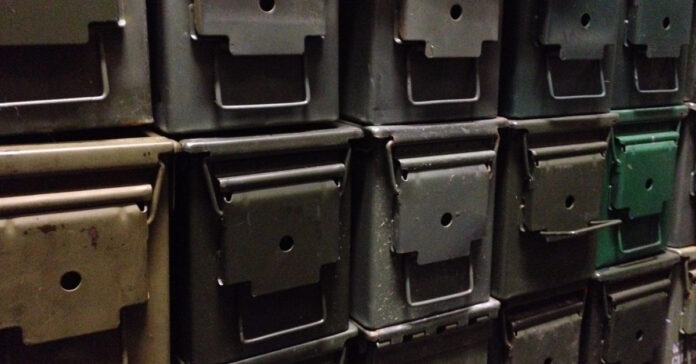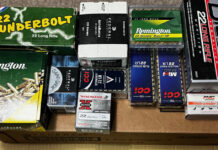Reports say both Russia and Ukraine are running low on artillery shells, missiles and rockets. The U.S. produces 155mm shells at the rate of 14,000 per month, but the Ukraine is firing 100,000 per month. We’re increasing output to 20,000 per month, but that isn’t enough. If the U.S. really wants to win this war, let’s pump that up to 140,000 shells per month.
Will the fighting stop because of low ammo? Or will they turn to older weapons stored in the back of warehouses? Russia is reportedly buying ammo from North Korea and Iran. I wonder how long it will be before China cranks out shells for Russian weapons? What are we going to do, ask the Israelis to make missile for us?
We’re considering sending Patriot missile systems to Ukraine, but how many of the antiaircraft missiles do we have for these batteries? This is our premier anti-aircraft system. As a taxpayer, I’m happy to shoot down a ballistic missile or Russian MiG 31 or an SU-30MKI, but I don’t want to waste $4 million missile shooting down an $50,000 Iranian drone.
How many rounds for HIMARS launchers and rockets have we kept for ourselves? Are we restocking those warehouses in Germany when we ship men and material to Poland? Let’s save some munitions so our guys can back fight if the war spreads.
Let’s Crank up Production
Between what is still a limited war in Europe and the threat of a war in the South Pacific, demand for weapons probably hasn’t been this strong since the end of the Cold War. Besides selling arms to Ukraine, Poland and other NATO countries, we are selling weapons systems to Taiwan, Japan, and even Australia.
We need to get on more of a war footing and start producing more drones, Javelins, man pads, rockets, missiles, anti-aircraft systems, armored personal carriers, and even tanks and artillery. Let’s make like we did in World War two and crank up production of ships and submarines in U.S. shipyards and have one of the big automakers that is shutting down its plants put their people back to work making drones or other weapon systems. Let’s pump some of that taxpayer money back into the pockets of hard working Americans before it inflates away to nothing.
Poland is gearing up for a fight. Sweden and Norway are joining NATO, and the Baltics are bracing themselves for war. To ignore the battle in Ukraine and act like it will never spread is naïve and dangerous. Russia is on a war footing, spending 30 percent of its GDP on military gear. China is on a war footing, converting plants that make consumer goods to produce military products. What are we waiting for?
Prepper Lesson
One important lesson for preppers is that you can never have enough ammo. We can grow food, but we can’t grow ammo. The day may come when your 10,000 (or whatever) rounds of 5.56 isn’t enough and you’ll have to use your 22LR and 9mm. If you are outfitting multiple people, that day may come far sooner than you expect.
Let’s say you have a team of eight people and issue each a dozen 30-round magazines. That’s 2,880 rounds, or three cases of ammo. If you get in a fire fight, expect inexperienced shooters to dump rounds down range with little or no discipline and hitting nothing. When they move from the range to real life, some of the training is going to stick, but some of it is going right out the window. That means they will also leave behind empty or partial magazines, even if you give them a dump pouch and train them to stuff the empties in there.
And speaking of magazines, do you have 96? How many of your team members will show up with their own gun? If they do, how many will have ten or 20 magazines and how many will have just three? When you help unload their bug out vehicle, will they have brought cases of ammo and boxes of food, or will they have filled the space up with sentimental non-essentials?
If you get in a fire fight, you better hope you win decisively and that you can glean supplies from the enemy.
We Don’t Know what to Expect
The Russian invasion apparently caught Ukraine and much of NATO by surprise. That’s how disasters happen. You prepare for A, B, and C and you get R, U, and S. You just have to hope that there’s some overlap and your plans can adapt.
As preppers, we know we need to store food. Many underestimate how much they should store. I bet more underestimate how much ammo they should store. Why? Because we don’t know what to expect. We don’t know if the world will turn into the Wild West. We don’t know if the Golden Horde will overrun you or if you’ll be one of the few survivors and rarely see another human.
You might be thinking, “I’m a good shot. I won’t waste ammo.” Let’s assume you are a great shot. What happens when you and your buddy get caught by surprise and you have to provide covering fire while he retreats? Then he provides cover fire for you while you bound backwards past him. Covering fire means shooting to keep the enemy’s head down so they can’t shoot you. By definition, not every round will hit someone because not every round is fired at an exposed target.
When you go to a two-day training class, there is a reason they tell you to bring 500 to 1000 rounds.
Reloading
I have two progressive reloading presses and one single stage for precision rifle. I’ve reloaded in excess of 20,000 rounds. For example, I used to buy cases of FMJ projectiles, (just the bullet heads) in quantities of 2,500 or 5,000. I have two eight-pound kegs and several 5-pound bottles of various smokeless powders to reload pistol calibers, shotguns, and rifles. I also have a couple sleeves of primers. All of that will help me extend our supplies, but it won’t last forever. We’ll run out of bullet heads, primers and powder.
In the past, I reloaded to save money. Today, components are expensive and hard to find. Hazmat fees make ordering them online even more expensive. If I was a new prepper and had budgeted $2,500 for reloading equipment, I’d buy $2,500 in ammo instead. Unless you are reloading for cowboy calibers or using black powder and plan to cast your own lead balls and bullets, I don’t see reloading being a great option for preppers post SHTF.
My advice is to buy ammo on a regular basis. Put aside money every month and then take advantage of a sale or a deal at the gun show. Buy case lots whenever possible. If you buy 1,000 rounds every six months, you’ll have 10,000 rounds in five years. That’s a good start.








